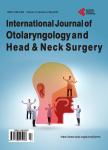Applicability of PCR-DGGE and 16S rDNA Sequencing for Microbiological Analysis of Otitis Media with Effusion
适用性PCR-DGGE和16S rDNA序列为分泌性中耳炎的微生物分析作者机构:Department of OtorhinolaryngologyTartu University HospitalTartuEstonia Institute of MicrobiologyUniversity of TartuTartuEstonia
出 版 物:《International Journal of Otolaryngology and Head & Neck Surgery》 (耳鼻喉(英文))
年 卷 期:2012年第1卷第3期
页 面:71-76页
学科分类:1002[医学-临床医学] 100214[医学-肿瘤学] 10[医学]
基 金:supported by SF109870 from Estonian Science Foundation
主 题:Otitis Media with Effusion 16S rDNA Targeted PCR DGGE Fingerprinting
摘 要:Background: The aim of the study was to analyze the performance of PCR-DGGE based assay and its applicability as a tool for the identification of bacteria in the middle ear of children with otitis media with effusion (OME). Methods: The middle ear effusions from 20 children with OME were analyzed both by bacterial culture and by 16S rDNA-gene-targeted PCR assay, DGGE fingerprinting and sequencing analysis. Results: In bacterial culture assay, only three middle ear effusions (15%) showed bacterial growth. None of the samples were positive for anaerobic culture. The PCR assay with 16S rDNA-gene-targeted universal primers was positive in 10 (50%) cases. The subsequent DGGE fingerprinting and 16S rDNA sequencing analysis revealed that the most commonly encountered bacteria in the middle ear effusions of children with OME are Haemophilus influenzae, Alloiococcus otitidis and Bacteroides spp. Conclusions: The present study demonstrated the applicability of PCR-DGGE based assay and 16S rDNA sequencing for analyzing of bacterial diversity in the middle ear effusion of children OME. The results of our study may contribute to a better understanding of the etiology of OME.



